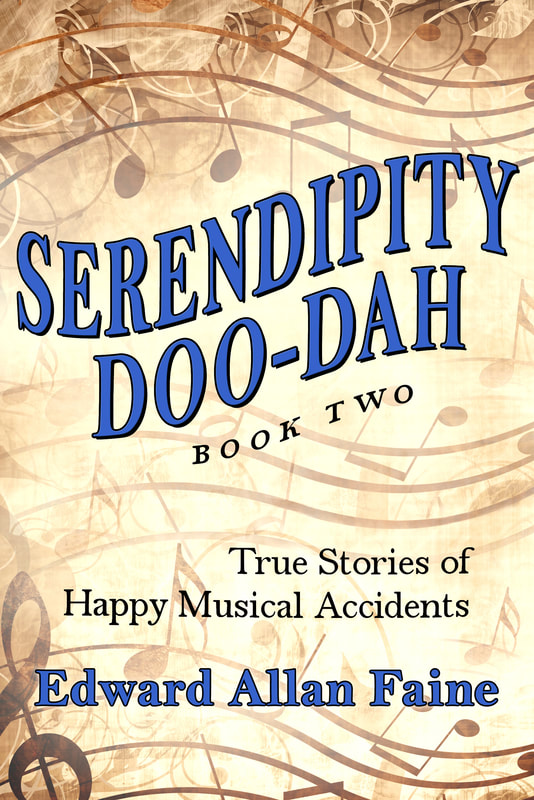| This is part 2 of a two-part series. Read part 1 here. Will Friedwald examines nine Ellington songs in-depth and makes many interesting observations, starting with “Mood Indigo” (1931), a 32-bar standard with a most unusual AABA CCDC form, or two 16-bar songs chained together. Here, he gives an equal measure of credit to lyricist Mitchell Parish (as did Ellington) who “found words appropriate to the emotions embodied in” Duke’s abstract musical design. |
Mitchell Parish, who worked for Irving Mills, miraculously received full lyric credit for “Sophisticated Lady” (1932). “Musically,” Friedwald writes, “the song is remarkable. Lots of pop songs modulate upward on the bridge, but ‘Lady’ is one of the few that modulates downward.”
And maybe that’s what made George Gershwin jealous. He famously said he’d wished he had written that bridge. The melody has a stark quality, appropriate lyrics, and the sense of solitary life. Again, Friedwald asks, “who should we credit for this coordination of purely ‘absolute/abstract’ musical design and ‘verbal/psychological’ meaning? Ellington? Lyricist Eddie Delange? Together?”
The song oracle muses, “In a Sentimental Mood” (1935) seems to come from an entirely different planet than other pop or show tunes composed that year. Both the melody and lyrics thrust forward the relation of stability and agitation. Friedman asks himself, and us, “So who wouldn’t want a oneness of rest and motion, security and adventure.”
I would ask, “So who wouldn’t want to listen to the Ellington-Coltrane version of “Mood” on Impulse Records from 1962 every single day for the rest of their lives?”
Like all the rest, “Prelude to a Kiss” (1938) began life as an orchestral piece, a most technically complex one at that, rarely paralleled in jazz composition of the time. Friedwald concludes, “Its mathematical sophistication befits a song that began as a pure instrumental.”
Our song historian marvels at the brilliance of “I Got It Bad (And That Ain’t Good)” (1941), writing that the structure of the piece reveals a mighty, organized, profound composer at work. He is equally taken with the masterful lyrics by Paul Francis Webster that fully capture a distinctly Ellington mood: sad but not without humor, saturated with the spirit of the blues, even a suggestion of religion. This song from Ellington’s major career disappointment Jump for Joy—his hoped for but never to be Broadway theatrical smash—became the best know tune from the show’s five widely recorded songs: “I Got It Bad,” “Jump for Joy,” ”Rock’s in My Bed,” “Just Squeeze Me,” and “Just Sittin’ and a Rockin’.” (All made it into Ella Fitzgerald’s songbook, but only “I Got It Bad" made it into The Jazz Standard book by Ted Gioia.
Friedwald takes a look at “I Don’t Get Around Anymore” and “Do Nothin’ Till You Hear from Me” (1942–43) together. They share the same harmonic point of view and lyrics by S. K. “Bob” Russell, for which the historian has nothing but high praise. And I quote: “In each case, Russell freely adapted the original instrumental melody. In the first instance he and his wife . . . virtually rewrote the bridge . . . They also made ‘Do Nothin’ into something far more song-like than the original Concerto for Cootie.” Of the former, Friedwald wrote, “it is one of the striking songs of Ellingtonia, a true meeting of the minds between the maestro and Russell [and his wife].”
Don’t fret—lyricists shape composer’s melodies more often than one might imagine. Did Ira Gershwin influence the contours of brother George’s songs? You bet.
Ellington and Russell collaborated on at least four other songs; only “I Didn’t Know About You” and “Warm Valley” contributed significantly to their respective bank accounts.
Together, the lyrics (by Johnny Mercer) and melody (by Duke and partner Billy Strayhorn) give us a collection of hints that eventually add up to a portrait of “Satin Doll” (1953). This musical concoction, Friedwald opines, may be the one song with the most miniscule range in the Ellington oeuvre. The A and B sections both fit neatly between G and D resulting in a gentle, smooth melody. No rough edges here, dissonances, or “I Got it Bad” octave leaps. That’s “Satin Doll.”
Coda: The songs above were played at the 1969 All-Star White House Tribute to Duke Ellington, and can be heard on the Blue Note CD of the same name. Extensive liner notes, if you will, can be found in my book.




 RSS Feed
RSS Feed